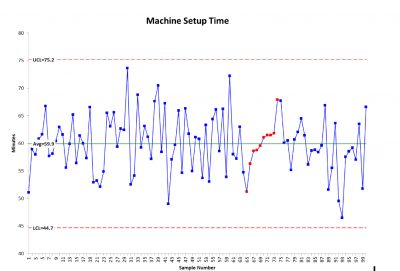
Variation exists in every process. To properly manage your process variation, you need to distinguish between the variation caused by the process inputs and that of special causes.
Overview: What is a special cause?
Famed statistician, Dr. W. Edwards Deming, coined the phrases common cause variation and special or assignable cause variation. Deming described common cause variation as the natural fluctuation in your process caused by the inputs or elements of the process. Since it is the baseline condition of your process, any attempt to change the variation will require fundamental changes in the inputs.
Special cause variation refers to unexpected and assignable events which can affect a process. These are variations that were not observed before and are unusual, non-quantifiable variations. Special cause variation may be sporadic. It is not usually part of your normal process and seems to just unexpectedly occur.
Special cause variation does not imply something is good or bad. You can unexpectedly have something happen which improves the process or makes it worse. The appropriate action is to investigate and try to uncover the assignable cause. Once you have discovered the cause, you can either incorporate the cause if the process was made better or eliminate it if the process was made worse.
An industry example of special cause
The company’s Six Sigma Black Belt (BB) was helping the manufacturing manager monitor his machine setup time with a control chart. He noticed that at point 65, an upward trend of consecutively increasing times began. This was shown as a series of increasing red data points. The manager was concerned with the increasing setup times since this would have a negative impact on his schedule.
The BB put together a small team of machine operators who identified the reason for the increasing times. Since this was having a negative effect on the process, they made recommendations to reduce the times back to the common cause variation it had been exhibiting. The control chart below shows what the BB was looking at.

Frequently Asked Questions (FAQ) about special cause
How can I determine if my variation is common or special cause?
The control chart is the tool used for distinguishing between common and special cause variation. If all your data points fall within your upper and lower control limits and behave randomly, you can conclude your process is exhibiting common cause variation. If not, then you have special cause variation.
Is special cause variation in a process bad?
It depends. Sometimes a special cause can result in an improvement in the process. You would then want to incorporate the change rather than eliminate it.
What should I do if my process shows special cause variation?
Your first action is to investigate to see if you can discover the reason or assignable cause of the unexpected variation, whether it be good or bad. Next, you should decide whether to eliminate or incorporate the reason depending on whether the process was made better or worse by the cause.